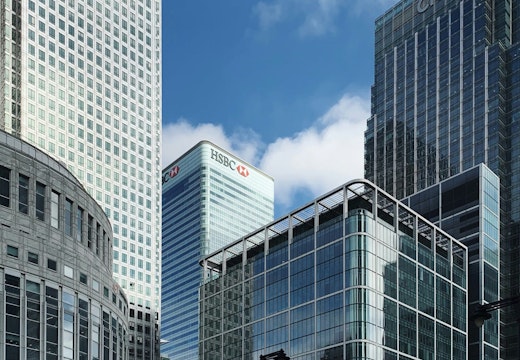Will this Canary Wharf tower become an icon for mixed use?
Plans to revamp the iconic HSBC office tower into a dynamic mixed-use development signals a shift in how business districts might evolve, but transformation of this kind will require more than architecture
If there’s one factor that unites the real-estate markets of New York, London, Paris, Sydney and elsewhere, it’s the drive to transform monocultural business districts that risk becoming increasingly moribund into vibrant mixed-use developments that sustain more dynamic communities.
The impact of hybrid working has persuaded all the major players in urban transformation – from investors, landlords and developers to policymakers and occupiers – to coalesce behind a common vision: to revitalise the commercial core of the city with a broader mix of uses and experiences beyond the basic provision of office space.
A practical blueprint
But while agreement in principle is one thing, realising this vision of multiple uses inside monolithic office towers is another. Many real-estate professionals recognise the need but lack a practical blueprint for delivering change.
That’s why the unveiling of plans at Canary Wharf in London to completely remodel the iconic HSBC tower at 8 Canary Square once the bank moves out in 2027 is a welcome development. The project designed by architects Kohn Pedersen Fox will see sections carved out of the building’s façade to create terraces and transform the tower into a mixed-use facility with a public viewing gallery and other leisure facilities.

Photography courtesy of Kohn Pedersen Fox
The project follows a global design competition run by Qatar Investment Authority, which owns the tower, and developer Canary Wharf Group. The partners describe their scheme as the largest ever conversion of an office tower into a mixed-use development. It begins in 2027 and should be completed in 2030.
Kohn Pedersen Fox has the design and engineering task of turning the 1.1 million sq ft building into a best-in-class hub with workspaces, leisure, entertainment, education and cultural attractions. Floorplates will be smaller with defined sections, making office spaces easier to lease.
Investing in change
It’s easy to see why Qatar Investment Authority, which acquired the property in 2014 from South Korean owners for £1.1 billion, is going all-out to invest in change. Canary Wharf is a business district that has struggled since the pandemic with falling occupation rates and the departure of high-profile occupiers such as HSBC and Clifford Chance.
To keep Morgan Stanley from joining this exodus, Canary Wharf was forced to pay a sweetener of £150 million to refurbish the banking group’s offices. Even so, it retains considerable appeal as a business hub. A reported 67.2 million people visited the district last year and transport links are excellent with the new Elizabeth rail line. Showing what can be done to make its forbidding office towers more sustainable and community friendly makes perfect sense.
Shobi Khan, Canary Wharf Group’s chief executive, even evokes the model of the 15-minute city in describing the scheme as ‘another step in Canary Wharf’s evolution into a vibrant mixed-use neighbourhood offering workspace, retail, homes, leisure and amenities all in one location’.
Experience matters too
However, there is more to making a compact and convivial neighbourhood like this than simply reconfiguring the hard engineering of the built environment. Soft factors around the activation and curation of space matter too. Creating community engagement and building social value are design exercises that map over the top of remodelled towers. And it’s not just about mixed use either – developers are increasingly exploring the idea of mixed-experience buildings and neighbourhoods.
When WORKTECH Academy collaborated with Australian developer Mirvac on a report, ‘Unlocking nexus value: from mixed use to mixed experience’ (2023), we identified a set of interdependent factors such as place identity, grassroots projects, events, festivals, public art and multi-sensory richness that contributed to successful multi-use buildings and neighbourhoods. These are experiential in character and help to create a sense of belonging. They can also be viewed as a filagree of culture layered over the top of redesigned buildings. Another layer is the application of digital technology to support communication, wayfinding and storytelling.
‘We identified a set of interdependent factors that contribute to successful multi-use neighbourhoods…’
Architecture is important and the Kohn Pedersen Fox team has already made some smart design moves with its Canary Wharf assignment. But extracting real value from the project will require a complex mix of creative and social inputs beyond the base building. To achieve their vision, the owners and developers of the HSBC tower will need to hold their nerve and really go the distance.
To learn about how city districts around the world are faring in the hybrid era, access WORKTECH Academy’s Q1 2024 Trend Report our Innovation Zone, an exclusive resource for members and partners, here.
Join WORKTECH Academy as a member here.








